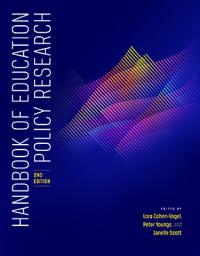Community Colleges: History, Performance, and Paths to Improvement
AERA members: Please enter your coupon code in the shopping cart coupon discount field.
Community Colleges: History, Performance, and Paths to Improvement
Thomas Brock
Ava Mateo
Alexa Ray
Click here to view and purchase Handbook of Education Policy Research, 2nd Edition
Title information
Community colleges are a uniquely American institution. These highly accessible, relatively low-cost institutions offer a wide range of postsecondary education and workforce training programs to all who seek them. They serve both traditional-age and older students from diverse populations, and disproportionately serve low-income students. Yet, despite enjoying public and political support, community colleges receive far less funding per student than most public four-year colleges or universities, and they produce mixed results. On the one hand, there is evidence that community colleges help some students transfer to four-year colleges and universities, find good jobs, and advance economically. On the other hand, far too many students who enter community college make slow progress or stop out before achieving their academic or occupational goal. This chapter examines the role of community colleges in the higher education landscape. It begins with a review of their history and evolving mission, followed by trends in enrollment and an examination of student characteristics and outcomes. This is followed by a synthesis of research on reforms intended to improve student outcomes in community colleges, focusing on developmental education, student advising and support services, financial aid, policies to promote transfer to four-year institutions, and comprehensive reforms. The chapter concludes with a discussion of new directions for research and practice.
Keywords: community colleges; program evaluation; student enrollment; student outcomes

